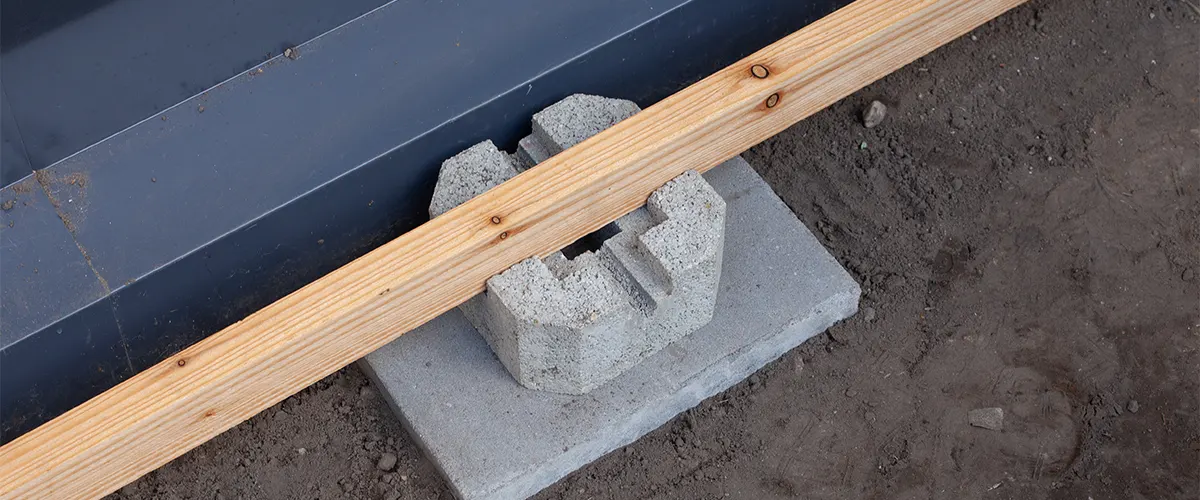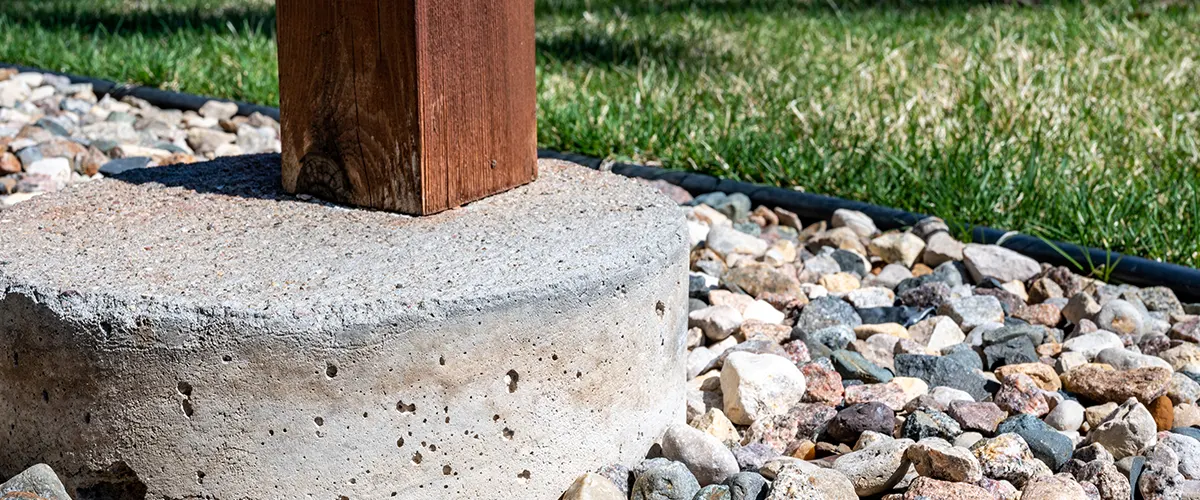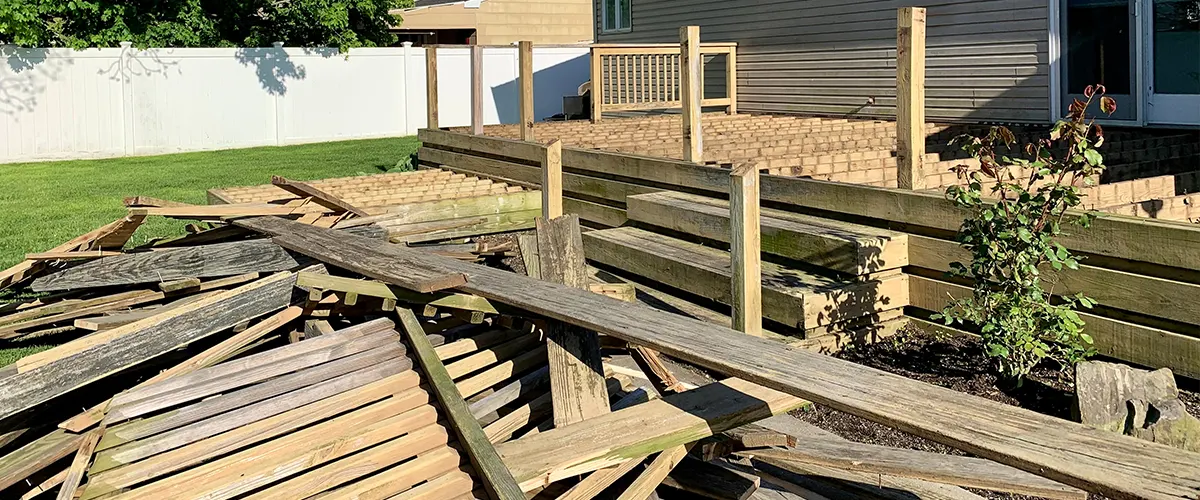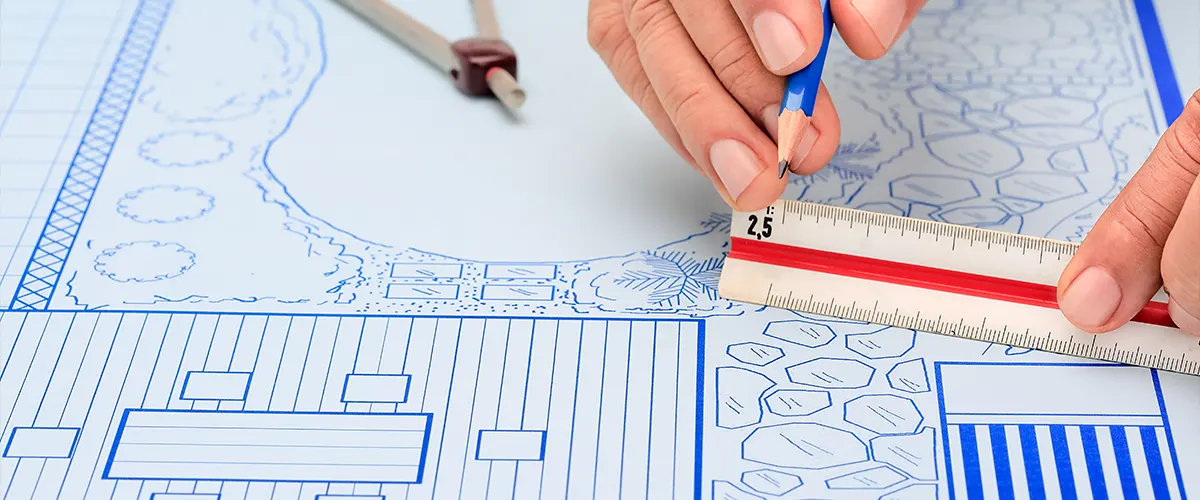The structural integrity of your deck starts from the ground up. There’s one crucial aspect of your deck that sustains all that weight and ensures your deck remains even with the ground surface.
The deck blocks.
There are many types of deck blocks lately, and different ways to place the posts on the ground. However, concrete deck blocks remain deck builder’s favorite.
In this article, we’ll see how concrete deck blocks are one of the best choices for your deck blocking.

What Are Concrete Deck Blocks?
Concrete deck blocks are one of the most popular types of deck blocks. They are precast deck blocks made of concrete and have a rectangular or square shape.
Because of their durability and resistance, concrete deck blocks are a must in most deck building projects. They’re mostly used to place the posts on the ground (for a floating deck), but also to offer extra support for ground level decks.
Their main purpose: to spread the weight of your deck in the ground.
A deck block, in many aspects, is simply a “precast foundation,” a part of the deck foundation type that is recognized by building codes.
Sizes Of Concrete Deck Blocks
Concrete footings and deck blocks are subjected to all of the same regulations as a normal footing, whether or not they are cast-in-place.
The block must be at least 12 inches below grade, or below the local frost line. They may not, however, simply be placed at ground level.
Poured concrete footings are rather simple and resemble the top of a low-quality ballpoint pen. The concrete pier block has an inner wood deck support post.
The block’s concrete lugs perform the role of a pen cap’s sidewalls. You may just as easily lift a deck off the blocks as you would pull on a cap to reveal a pen. It’s all about putting things in their simplest form possible.

Pros Of Concrete Deck Blocks
- One of the great things about concrete deck blocks is that they are very easy to install. You don't need any special tools or equipment to install them.
- Concrete deck blocks are also very durable. They can withstand a lot of weight and stress without breaking or cracking. This makes them ideal for use in areas that experience high traffic or heavy loads.
- Concrete deck blocks are also very affordable. They are one of the most cost-effective options when it comes to deck blocking.
- Because you'll buy the concrete deck blocks, there's no mixing of concrete involved.
Cons Of Concrete Deck Blocks
- Concrete footings have no means of physically connecting to the wood deck posts. The post just sits on top of the block, and you hope the concrete lugs don't break off over time.
- The wood deck post must be buried, which means it is suffocated by water and insects. The Internet is filled with images and testimonies of treated ground-contact wood that has rotted or been infested by termites.
- The blocks might or may not include reinforcement steel. In tension, concrete has ten times less strength than it does in compression. Every time a deck is built on top of a patio, supports should be added to the structure to ensure that it is safe and sturdy.
Maximum Weight Concrete Deck Blocks Hold
A concrete deck block can bear a significant amount of weight since it has a footprint of 12 x 12 inches, as measured on a side. This is equal to 144 square inches.
A typical deck pier footer has a diameter of 20 or 24 inches. As a result, the 20-inch footing offers 314 square inches of bearing and the 24-inch footing has 452 square inches of bearing on the ground.
The best way to ensure your concrete footings are enough to sustain your deck is to contact a professional. It’s best to have a professional help you with the more technical aspects of deck building.
If anything goes wrong with your project, there’s been cases where the local building code office inspector asked for the construction to be demolished and started over because it wasn’t safe to continue the work.

Frequently Asked Questions
Concrete deck blocks don’t require a bed of gravel or sand, and you can place them directly on the ground. However, make sure the ground is solid, and if it’s not, tamper it thoroughly before you install the block.
There’s no set in stone rule to how many feet you should have between each concrete deck block. Usually, they’ll end up 6 or 8 feet apart. If you’re working with a contractor, they’ll know how to calculate the total weight of your deck and where to place each block.
This depends entirely on the size and shape of your deck, and the deck framing. Your deck builder will do lots of math to determine the optimal number of concrete deck blocks without exceeding the budget. As a rule of thumb, the soil can only support 2,000 pounds per square foot.
For example, if a deck weights 12,000 pounds, you’ll need minimum 6 concrete deck footings (considering the weight is equally distributed to all posts). It’s best to be safe, so go for 8 to 10 blocks.
Conclusion
The safety of you and your loved ones while on your deck should be your main priority when building a deck. And there’s no way around it.
If you have experience with building floating decks, you could start planning and designing the deck, but you should leave its safety in the hands of professionals.
Concrete deck footings are great options to strengthen the integrity of your outdoor living space, but they require proper installation and distancing.
If you’re looking to have professional work on your deck, request a free quote today and we’ll get back to you as soon as possible. If you’re in a rush, call us today at (865) 801-4545 and let’s get straight to work!

